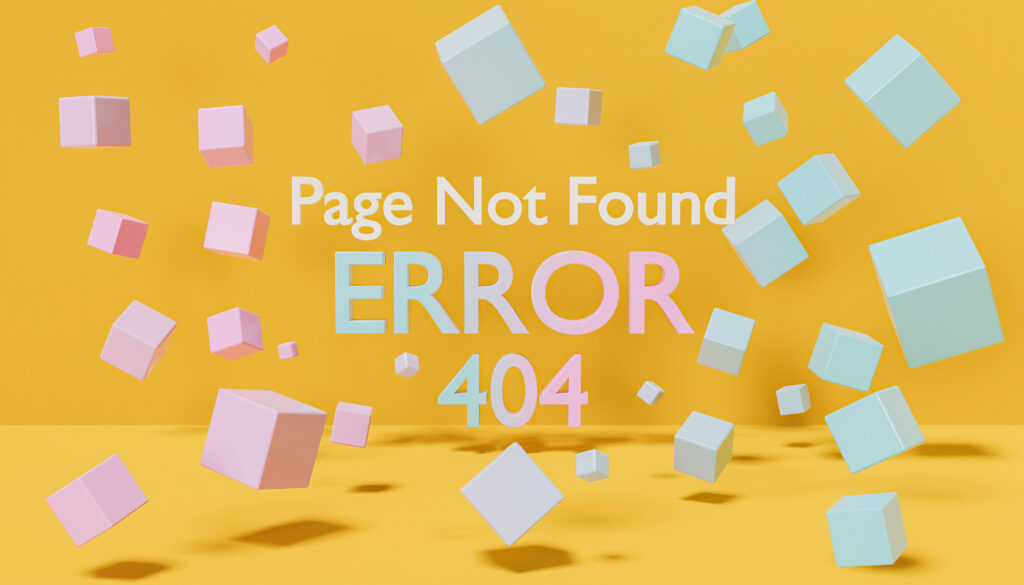
Is your website running at its best and getting the targeted traffic you are looking for? Website maintenance is a necessity for optimal performance, user experience, and search engine visibility, is your website making the common mistakes that damage your ranking? In this article, we look at the 7 most common website maintenance mistakes so you can ensure your website is running in optimal condition and reaching the audience you want.
Table of contents
- The Importance of Website Maintenance
- 7 Common Website Maintenance Mistakes to Avoid
- 1. Neglecting Regular Updates and Security Patches
- 2. Overlooking Broken Links and 404 Errors
- 3. Ignoring Website Speed and Performance Optimization
- 4. Failing to Backup Website Data Regularly
- 5. Not Monitoring and Fixing Crawl Errors
- 6. Poor Mobile Responsiveness and User Experience
- 7. Lack of Regular Content Updates and Improvements
- The Benefits of Professional Website Maintenance Services
- How to Find the Perfect Website Maintenance Service Provider
- Conclusion
The Importance of Website Maintenance
Website maintenance is more than updating and keeping your site online. It comprises of routine updates, security scanning, content tweaking, and website analytics tracking. Abandonment of website maintenance can result in different problems such as a slow loading of web pages, security holes, broken links, and obsolete information. You can maintain your website in perfect condition and create a smooth interface for your visitors by avoiding these common errors.
7 Common Website Maintenance Mistakes to Avoid
Maintaining a website is crucial for its performance and success, but it’s easy to make mistakes along the way. Here are seven common website maintenance mistakes to avoid for better performance:
1. Neglecting Regular Updates and Security Patches
The failure to avoid not regularly updating your website and not applying patches is a common and critical mistake in website maintenance. The content management systems (CMS) like WordPress and Joomla often release updates of bug fixes and security improvements. Overlooking these updates will leave your site open to various threats.
Periodical reviews are necessary to keep the safety of your website. They patch known vulnerabilities and ensure that there are no bugs that hackers can exploit. Furthermore, updates can improve the speed, compatibility, and performance of your website, thus optimizing.
To avoid committing this error, periodically check for updates and explore the option of automatic updates where appropriate. However, always test after the update to make sure that everything is running. It is also advisable to have a backup of your website before making any changes since you can revert to the earlier version if necessary.
2. Overlooking Broken Links and 404 Errors

Not only do visitors find broken links and 404 errors irritating, but also these are negative to the SEO of your website. That is when a webpage gets deleted, moved, or renamed without proper redirection. Whenever a visitor encounters a broken link, it makes leaving your site and seeking information elsewhere more likely.
Additionally, search engines perceive broken links as bad website keeping. They interfere with crawling obstructing efficient indexing of your pages by search engines. Therefore, the visibility of your website in search results can be reduced.
Consequently, use Google Search Console or online link checkers to occasionally check for dead links on your website. Once you have found them fix them or remove them altogether while ensuring that deleted or moved pages have appropriate redirects set up for them. Make sure to update and maintain internal links within your website to improve user experience and enable better crawlability and indexation by search engines.
3. Ignoring Website Speed and Performance Optimization
The loading speed of a website determines user experience (UX) and search engine optimization (SEO). Research has shown that users demand websites that load fast and slow loading can result in large bounce rates and irritation. Slow loading speed is one of the factors that search engine rankings are affected.
Increase the speed of websites by compressing images using compression tools to reduce the file size without the cost of quality. Also, minimize CSS and JavaScript files to reduce their size and combine those files where possible in order to reduce HTTP requests.
Use caching – client-side caching and server-side caching – to cache elements such as images and CSS files for faster loading times on later user requests.
Check website speed at intervals using tools such as Google PageSpeed Insights or GTmetrix to find out those areas needing improvement and then make the changes needed to enable seamless browsing .
4. Failing to Backup Website Data Regularly

If you want to protect your website from loss of data, then you have to regularly back it up. One can lose important information through website crashes, hacking attempts, or accidental deletions. It takes a long time and costs much to recover a website without backup.
To avoid the consequences of data loss, put in place regular plans for backing up your files. You can manually make backups or use automatic backup plugins for this purpose. Select one that is most convenient and conduct a routine exercise for storing information away properly.
Moreover, testing the functionality of your backups is necessary as well. A backup that cannot be restored when needed does not serve any purpose. Frequently trying out your backups guarantees that in case of such accidents, you can be sure that your webpage will be saved.
5. Not Monitoring and Fixing Crawl Errors
When search engines come across problems when accessing your website’s pages and indexing them, it results in crawl errors. The visibility of your site on search engine result pages (SERPs) may be reduced by these errors as well as reduce organic traffic.
You can promptly detect and correct issues by monitoring crawl errors on your website with certain tools like Google Search Console. Some common crawl errors include server errors, broken links, and inaccessible pages. Rectifying these mistakes ensures that web crawlers can effectively navigate through your website thus resulting in better ranking chances in SERPs.
Moreover, these 404s and broken links need to be fixed on a priority basis since they affect the user experience negatively along with the SEO. Create appropriate redirects for deleted or moved pages, and regularly check for broken links using online tools or website crawlers.
6. Poor Mobile Responsiveness and User Experience
Mobile-responsive websites are becoming a must because of the increasing use of portable devices. Convenience and continuity are the main expectations from mobile users and they never get back to your site when its interface is not optimized for smartphones.
Mobile malfunctions include but are not limited to, distorted layouts, slow page loading speed, as well as hard navigation. Use responsive web-design techniques that adapt the layout and content of your website depending on the size of the screen used by a visitor to ensure a positive user experience on mobile devices.
Therefore, check if it appears okay and works fine on phones through varied devices then revise it accordingly. Typical examples would be – font sizes, button sizes, and more importantly overall readability. Moreover, Google’s perception of any website being mobile-friendly as one of its ranking factors affects optimization for search engines.
7. Lack of Regular Content Updates and Improvements
Content is the main support of any successful website. Keeping the website content current and updated is a must for both engaging current visitors and attracting new ones. Routinized or dated content may give an impression of abandonment of the site and hence drag the visitors away.
Instead of this, outline a content strategy that is comprised of timely updates and upgrades. Determine the places where your content can be refined, improved, or increased. Proactive maintenance and updating of information is critical, consider incorporating diverse content formats such as videos, infographics, or podcasts to diversify your offerings.
Besides, keep an eye on user-creating content like comments or reviews. Communicate with your audience and respond quickly to their Feedback. Incite and motivate users to share socially and be more active in the community.
Analyzing metrics regularly gives you insights into which content is performing and which needs to be improved. You can use this data to formulate your content strategies by factoring in whether you are adding value to your audience.
The Benefits of Professional Website Maintenance Services
Keeping a website running can be a tedious and complicated process. This is the reason that many website owners go to website maintenance service providers. These services offer knowledge, skills, and committed resources to ensure that your website is always current, secure, and running smoothly.
You can outsource the maintenance of your website and concentrate on your main business activities while the technical matters are handled by professionals. Website maintenance services from professionals include regular backups, security monitoring, software updates, performance optimization, and content management. They can also provide you with important findings and suggestions on how to enhance your website’s functionality and usability.
How to Find the Perfect Website Maintenance Service Provider
Choosing the right website maintenance service provider is crucial for ensuring your website’s success and longevity. Here’s a brief guide to assist you in making the right decision:
- Assess Needs: Establish your particular website requirements, including updates, security, and support, and indicate a budget.
- Evaluate Experience: Look for providers that have a record of their success and related experience in managing websites similar to yours.
- Review Services: Make sure that the provider offers services that have what you need that as conducting regular updates, security monitoring, backups, and technical support.
- Check Support: Select a service provider offering timely and supportive technical assistance, preferably operating round-the-clock.
- Consider Security: Prefer security-aware providers that employ strong security practices such as malware scans, firewall protections, and SSL certificates.
- Compare Pricing: Evaluate pricing plans and contract agreements from different suppliers to identify the option most suitable for your budget.
- Seek Recommendations: Ask your colleagues or peers for references and check the provider’s reviews online to see how they are being viewed and how reliable they are.
- Request a Consultation: Talk to potential providers to define your needs and answer your questions, thus assessing their level of professionalism as well as expertise.
Considering the factors stated and engaging in thorough research, you can find a top-notch website maintenance service provider that suits your requirements and ensures your website’s sustainability over time.
Recommended Articles
- How to Craft a 360° Digital Marketing Strategy in 2026
- LLMs Are the New Search Bar — Here’s Why That Matters
- From Multichannel to Omnichannel: How Top Brands Stay Ahead
Conclusion
In conclusion, Website maintenance is pivotal for the seamless functioning and victory of the website. By avoiding regular maintenance mistakes and entrusting the work to professionals, you will greatly improve your website’s performance and provide your visitors with a good user experience. To pick the best service provider, you must find one that not only fulfills your requirements but also offers value for money in terms of support. That’s where Hunters Digital fits in – We provide professional website maintenance, ensuring that your website is always updated, secure, and running at its best.
Do not allow maintenance responsibilities to slow down your progress. Contact us today to get the full potential of your website. Take advantage of their experience as you concentrate on boldly growing your online presence knowing that all your business objectives will be met successfully.

